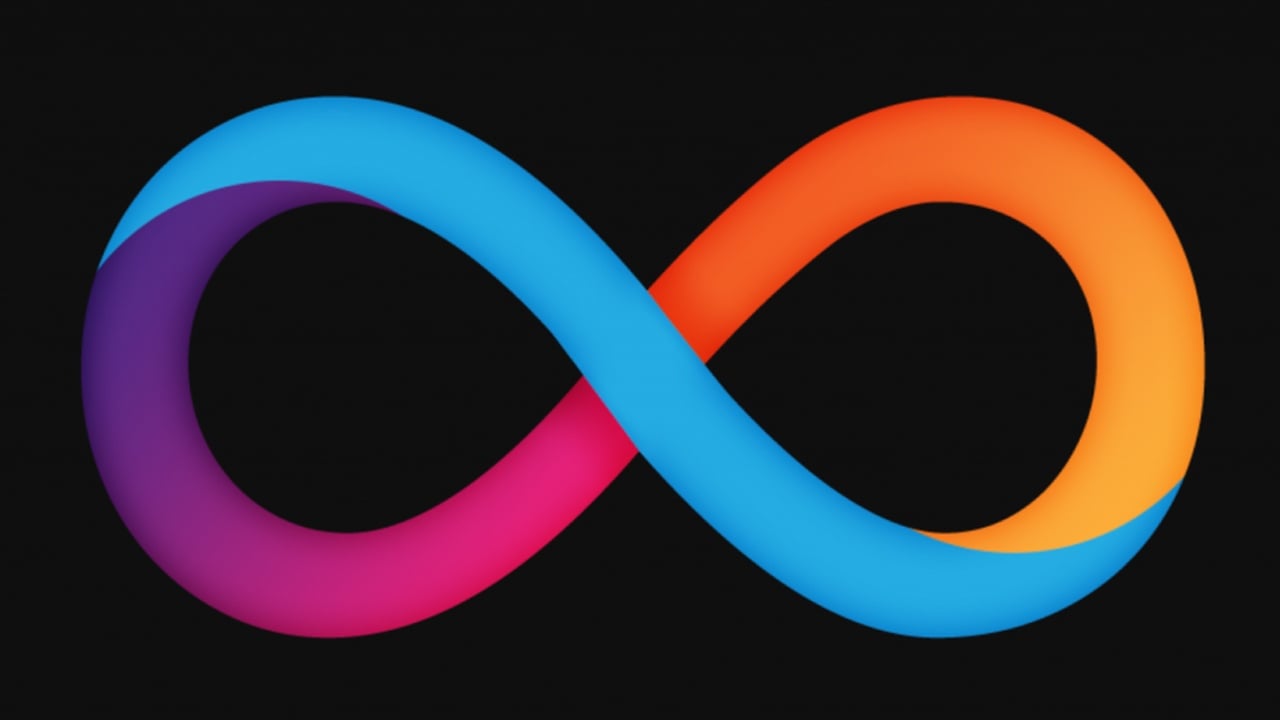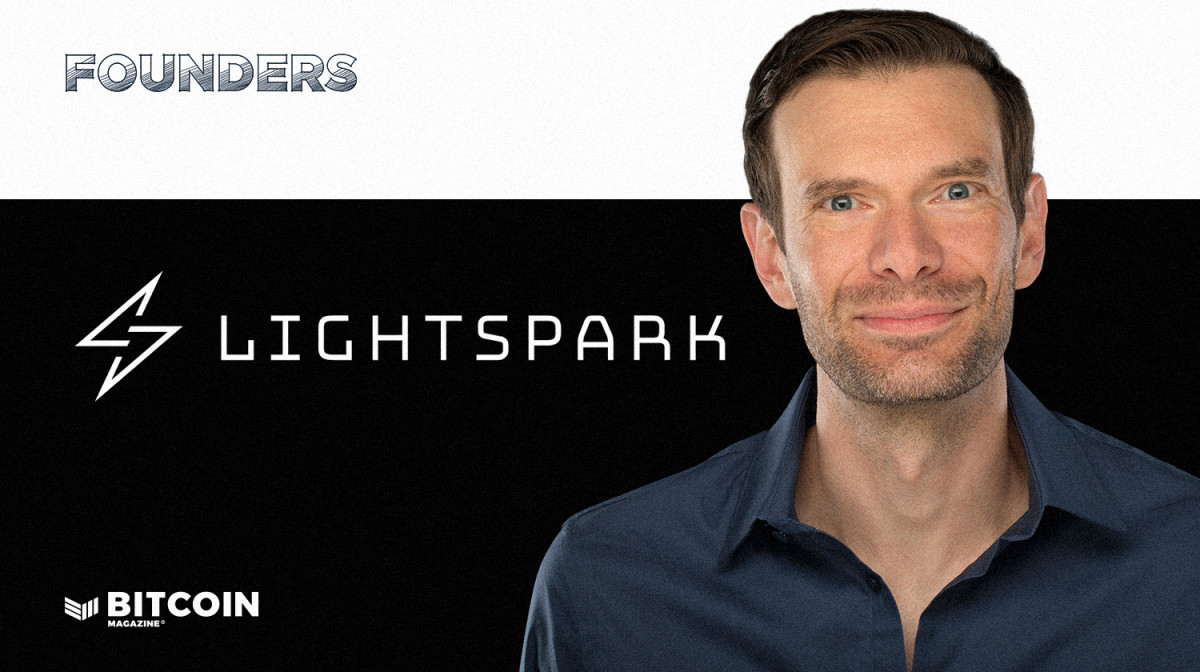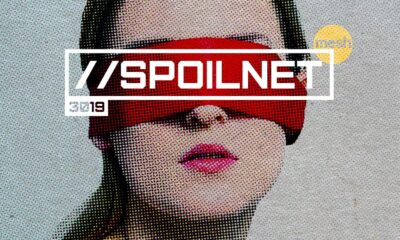Crypto News
Netflix was the top grossing app in Q2, with mobile revenue up 233%
Et harum quidem rerum facilis est et expedita distinctio. Nam libero tempore, cum soluta nobis est eligendi.

Nemo enim ipsam voluptatem quia voluptas sit aspernatur aut odit aut fugit, sed quia consequuntur magni dolores eos qui ratione voluptatem sequi nesciunt.
Et harum quidem rerum facilis est et expedita distinctio. Nam libero tempore, cum soluta nobis est eligendi optio cumque nihil impedit quo minus id quod maxime placeat facere possimus, omnis voluptas assumenda est, omnis dolor repellendus.
Nulla pariatur. Excepteur sint occaecat cupidatat non proident, sunt in culpa qui officia deserunt mollit anim id est laborum.
Sed ut perspiciatis unde omnis iste natus error sit voluptatem accusantium doloremque laudantium, totam rem aperiam, eaque ipsa quae ab illo inventore veritatis et quasi architecto beatae vitae dicta sunt explicabo.
Neque porro quisquam est, qui dolorem ipsum quia dolor sit amet, consectetur, adipisci velit, sed quia non numquam eius modi tempora incidunt ut labore et dolore magnam aliquam quaerat voluptatem. Ut enim ad minima veniam, quis nostrum exercitationem ullam corporis suscipit laboriosam, nisi ut aliquid ex ea commodi consequatur.
At vero eos et accusamus et iusto odio dignissimos ducimus qui blanditiis praesentium voluptatum deleniti atque corrupti quos dolores et quas molestias excepturi sint occaecati cupiditate non provident, similique sunt in culpa qui officia deserunt mollitia animi, id est laborum et dolorum fuga.
Quis autem vel eum iure reprehenderit qui in ea voluptate velit esse quam nihil molestiae consequatur, vel illum qui dolorem eum fugiat quo voluptas nulla pariatur.
“Duis aute irure dolor in reprehenderit in voluptate velit esse cillum dolore eu fugiat”
Temporibus autem quibusdam et aut officiis debitis aut rerum necessitatibus saepe eveniet ut et voluptates repudiandae sint et molestiae non recusandae. Itaque earum rerum hic tenetur a sapiente delectus, ut aut reiciendis voluptatibus maiores alias consequatur aut perferendis doloribus asperiores repellat.
Lorem ipsum dolor sit amet, consectetur adipisicing elit, sed do eiusmod tempor incididunt ut labore et dolore magna aliqua. Ut enim ad minim veniam, quis nostrud exercitation ullamco laboris nisi ut aliquip ex ea commodo consequat.

Crypto News
Bitcoin HODLers Need To Pull Their Weight Too

Imagine a scenario where you’re heading off for a 100-year vacation and you want your wealth to survive when you return. You decide to bury a safe that holds:
Some gold barsA bunch of $100 billsYour bitcoin in cold storage
What do you expect the outcome to be when you return from your 100-year absence?
The gold bars will still be there in good shape. The $100 bills will have physically decayed and the purchasing power will likely have dramatically weakened to the point where the bills are worthless.
What about the bitcoin? What is the bitcoin worth?
The answer depends on how the network operated during your long absence. If other people were actively transacting, then the miners were securing the network and your bitcoin will be safe and valuable. If everyone puts their coins in cold storage and joins you in a 100-year absence, then transaction fees will plummet, miners will go out of business, the network will atrophy and the coins will be worthless.
In other words, the backbone of the Bitcoin network is an assortment of miners who process transactions and maintain the integrity of the blockchain via expending time and resources. Since the miners are compensated via transaction fees and predictably-declining block rewards, transactions must occur for miners to have the funds to secure the network.
From the start, the bitcoin ethos is that those who use the network must work at it. Having ownership or stake confers no special privileges. Proof of Work vs Proof of Stake.
Unfortunately, HODLers are not working. HODLers are expecting that others will be compensating miners so that the HODLers’ stake will maintain its value. In today’s design and perhaps inadvertently, HODLers are not living up to the bitcoin ethos.
Working while HODLing
The question becomes, “How to secure the network (i.e. pay the miners) while HODLing?”
I believe the answer is to implement a HODL_FEE, which would compensate miners from dormant addresses.
In keeping with the bitcoin ethos, the HODL_FEE would be charged:
(a) to any address that had no coins going in or out for the last 52,500 blocks, which is one-quarter the halving period (approximately 1-year), and
(b) in an amount equal to 50% of Median Transaction Fee over the previous two weeks. Therefore, the HOLD_FEE would be re-set in a similar manner as the difficulty adjustment.
The HOLD_FEE is set to 50% MTF for two reasons: first, the address could avoid the HODL_FEE by making a simple transaction so we want the HODL_FEE based on current transaction fees, and second, the HODL_FEE is set to 50% MTF so that miners prioritize current transactions and then conduct HODL_FEE txns with the remaining block space.
Good faith arguments can be made to either increase or decrease the time and amount of the HODL_Fee, but these parameters make intuitive sense.
Benefits of the HODL_FEE
Aligns Incentives – In addition to block rewards and transaction fees, the HODL_FEE adds another mechanism for miners to be compensated, thus, encouraging the miners to maintain the network integrity even if transaction volumes plummet. HODLers will benefit the most as their coins will remain an effective store of value.
Cleans up the Dust – The blockchain is littered with Dust addresses that contain amounts of sats that are too small to conduct transactions. By one estimation, there are ~120 million addresses containing <1,000 sats (~$0.65), while the median transaction fee for a relatively quiet 24-hour period in May was 3,100 sats (~$1.90). With the HODL_Fee, all 120+ million addresses would be zeroed out and ~310 Bitcoin (~$20 million) would be paid to miners to help secure the network.
There are another ~20 million addresses with 1k-10k sats ($0.65-$6.50) with another ~1,000 Bitcoin (~$65 million) which would eventually be used to help secure the network.
That’s a lot of network cleanup with only a de minimis increase in circulating supply.
Unlocks lost Coins – Unfortunately, it’s easy for coins to get locked in addresses where the owner dies, becomes disinterested or forgets their keys. The HODL_FEE will bring some of these coins back into circulation, but at a very slow rate. If a dormant address holds 1 BTC and the HODL_FEE is 2,000 sats, it would take 50,000 years for the dormant addresses to be zeroed out, which should give the owner plenty of time to wake up from their coma and reclaim their coins!
Tests your Keys – A nice side benefit of the HODL_FEE is that it encourages owners to use their addresses, which means that at least once a year they can test to see if they remember their keys. This would seem to be especially important in multi-sig scenarios.
Encourages Network Usage – The HODL_FEE should increase network usage by encouraging owners to stack sats and/or spend their sats. Increasing the network usage helps ensure that miners are compensated properly and that Bitcoin remains a store of value.
Arguments against the HODL_FEE
Introduces a Tax – The HODL_FEE seems to run counter to the libertarian ethos as it is designed to force individuals to act in a certain way (i.e. keep stacking/spending) or pay a tax. Nobody likes taxes and nobody likes the idea of a tax for just existing.
Yet, a quarterly or annual custody fee is very common in bank or brokerage accounts, and the HODL_FEE is similar.
Most importantly, the bitcoin ethos is about Proof of Work. You don’t get benefits solely from ownership. Bitcoin owners cannot expect others to secure the network, and then have bitcoin remain a stable store of value.
Reduces Anonymity – The HODL_FEE can potentially reduce anonymity by encouraging individuals to make transactions (which can be surveilled), to consolidate their holdings into fewer addresses (which are more likely to linked to an owner) or to keep their coins on exchanges (which won’t have to pay the HODL_FEE because of their high transaction volumes).
However, anonymity always comes at a cost. People can build high fences, move to remote locations, use VPNs, etc. but each of these actions has a cost to it. For HODLers, the cheapest and easiest way to maintain anonymity while ensuring network integrity is to simply HODL and have the HODL_FEE withdrawn from their address every year.
Creates Unnecessary Transactions – The HODL_FEE will create millions of transactions, either through the actual HODL_FEE or by encouraging individuals to stack and spend. The HODL-FEE transactions will be very lightweight and easy to calculate, and the incentives are designed so that miners process current transactions before HODL-FEE transactions.
Regardless, there will be millions of new transactions, and the easiest solution would be to increase the blockspace so that transactions could be processed efficiently and miners would get more revenue to secure the network.
Final Thoughts
The Bitcoin ethos is Proof of Work, and HODLers need to work too.
The HODL_FEE:
Is FairIntuitive and easy to understandEasy to program and calculateEncourages stacking and spendingRewards miners for maintaining network integrityHelps ensure Bitcoin maintains its value
Who’s ready to write a BIP?
This is a guest post by Bob. Opinions expressed are entirely their own and do not necessarily reflect those of BTC Inc or Bitcoin Magazine.
A call for a fee for hodling Bitcoin, to balance the fact that the mining security budget is currently paid only by people transacting, not people simply hodling.
Crypto News
UN Development Programme Partners With Dfinity Foundation to Boost MSME Inclusion

The UNDP has announced a partnership with the Dfinity Foundation to enhance its Universal Trusted Credentials (UTC) initiative.
Crypto News
Lightspark Enables Institutions To Use The Bitcoin Lightning Network

Company Name: Lightspark
Founders: David Marcus, Kevin Hurley, Christina Smedley, James Everingham, Christian Catalini, Jai Massari and Tomer Barel
Date Founded: April 2022; Series A May 2022
Location of Headquarters: Los Angeles, CA
Amount of Bitcoin Held in Treasury: N/A
Number of Employees: 45
Website: https://www.lightspark.com/
Public or Private? Private
Kevin Hurley and the team at Lightspark want to make it easier for institutions and everyday people to transfer value via bitcoin.
This is why they’ve created Lightspark, a Lightning Service Provider (LSP) — and more — that offers enterprise-grade infrastructure that enables companies around the world as well as the customers for those companies to make payments globally using the Bitcoin Lightning Network.
“We want to carry on the vision that we originally had with Diem,” Hurley told Bitcoin Magazine. “And that was to really open up the financial world, make it into something where you can send money as easily as you send data packets today.”
Hurley also shared why the team at Lightspark chose to build on Bitcoin.
“Some of the learnings from [Diem] are that you really need something that’s truly decentralized, something that’s a neutral protocol and something with a lot of liquidity,” explained Hurley. “These are key aspects to Bitcoin and part of what makes Bitcoin so special.”
How does Lightspark work?
Lightspark considers itself a more than just a LSP because it offers a Software Development Kit (SDK), liquidity management via routing nodes, cloud based node architecture and API services that vendors can employ to build certain features or utilize certain services.
The Lightspark SDK lets customers very easily access the Lightning Network for payments without dealing with the headaches that normally come with using the network.
“We try to abstract [away] all the complexity of Lightning,” explained Hurley. “We talked to a bunch of the companies that have been in the Bitcoin space for a long time and tried to understand why they weren’t using Lightning or why they had tried and given up on it, and we heard a pretty similar refrain from all of them — it was just too complex.”
To use Lightning without an LSP, companies would normally need employees dedicated to managing and rebalancing the liquidity in their Lightning Nodes. With Lightspark, though, companies need only utilize a few lines of code provided by Lightspark to start using the Lightning Network for payments. Lightspark handles all of the technical details on the backend. Plus, Lightspark offers other features that institutions may find particularly useful.
“We have compliance features built on top of our stack,” said Hurley about how Lightspark can help companies stay compliant with FinCEN’s Travel Rule.
“We have AI built on top of our stack to make it so payments are extremely successful. We have Predict, which is like the Google Maps for Lightning. [It shows us] where traffic is backed up to help us route transactions more successfully. Then we start to tack on things like UMA or Universal Money Addresses, which allow you to send from any currency to any other currency,” he added.
Universal Money Addresses (UMA)
One of the most notable features Lightspark has architected and open-sourced is UMA.
Using Lightspark, companies can offer their clients a Universal Money Address, which is a cross between a Cash App $cashtag and an email address (e.g., $yourname@yourwallet/bank/exchange.com).
An UMA lets users send either crypto or fiat seamlessly, albeit in a custodial manner.
Hurley explained how UMA is built on top of and interoperable with LNURL and Lightning Addresses. A difference between LNURL and UMA is that UMA can be used to send fiat in its own unique way.
“You’re able to go from any currency to another currency using UMA,” shared Hurley.
“Let’s say I’m coming from Brazil, and I want to send money to someone in Mexico. Maybe I’m in Mexico visiting and I go to the 7-Eleven and want to buy something. I should be able to send from my native currency to Mexican pesos,” he added.
“With UMA, what happens is my Brazilian reals are converted instantaneously to sats. They’re streamed over Lightning and convert instantly from sats to pesos and pay out to the 7-Eleven.”
Part of the reason such transfers can happen legally is that UMA facilitates the exchange of compliance data between the different institutions with which Lightspark works, which are located around the globe.
The exchanges, neobanks, and other institutions that partner with Lightspark — all of which are regulated bitcoin/crypto custodians — have the proper money transfer licenses in their respective jurisdictions, which keep Lightspark and its partners in compliance with the aforementioned Travel Rule.
Lightspark’s Partner Institutions
Lightspark has made headlines lately, as it has signed deals with major institutions like Coinbase, Xapo, and Nubank. And as each new partner comes on board, more potential partners become interested.
“They see the growth — especially when we onboard a Coinbase — and a lot of entities have come to us and been curious about what’s happening,” said Hurley.
“They see that big players are starting to get interested and starting to see real volume on it, and they want to be involved, as well. They don’t want to be left behind because they understand that this area is growing and becoming very important,” he added.
For now, interest is coming from the more tech-forward neobanks, as these institutions want to provide services that differentiate them from traditional banks. However, Hurley noted that the major traditional banks are paying attention, too.
“The benefit [of what Lightspark provides] applies to a J.P. Morgan just as much as it applies to Nubank,” explained Hurley.
“We’ve engaged with quite a few of them. They oftentimes will need to see others do it first,” he added.
“Once they start to see real adoption, I think there will be quick adoption by them, too.”
Hurley also pointed out that there’s good reason for some of the bigger traditional financial institutions to come on board.
“Traditional financial firms have big pain points,” explained Hurley.
“They might have bank accounts in multiple countries, and, even within their own bank, transferring money takes days because they are transferring using SWIFT. They’re going from one entity in, let’s say, Argentina to one in Europe, and it takes them three to five days to transfer money. It means they have to set up correspondent banking. It’s a big burden on them and can be quite costly,” he added.
“I think they’re very excited to see something that can work more quickly, more efficiently and have better rails. It’s a net positive for everyone.”
Bullish On Bitcoin, Conscious of Reality
While Hurley and the Lightspark team believe that Bitcoin adoption will continue to grow, they’re also well aware that many people worldwide are still uncomfortable using Bitcoin.
Hurley sees Lightspark’s approach as a way to further Bitcoin adoption, while keeping in mind where the customer is coming from.
“To actually get real adoption and to keep increasing adoption, you need to meet consumers where they are, and a lot of consumers right now are comfortable with fiat,” said Hurley.
“Those folks probably don’t know anything about Bitcoin, and it’s going to take a while for them to be exposed to it. So, if you can abstract that away for them, allow them to use the currency they feel comfortable with, that helps get people on board and helps build adoption,” he added.
That said, Hurley also acknowledged that there are others who prefer to just use bitcoin and ultimately use it non-custodially before making the point that Lightspark and its partners enable users to send their bitcoin to a non-custodial wallet if they so please.
“Users can exit at any time from a custodian and go to noncustodian,” Hurley said.
He then made the point that neither Bitcoin nor Lightning currently has the potential to bring the masses to the network in a non-custodial manner, which is why companies like Lightspark and the companies it partners with are important right now.
“You can’t onboard billions of users to Bitcoin and Lightning [non-custodially] today,” explained Hurley.
“Long-term that could be possible, and we are doing a lot of exploration into how to make that happen, because we feel like it’s vital to the ecosystem,” he added.
For now, though, Hurley sees the custodial solutions that companies like Cash App, Coinbase, and, of course, Lightspark are providing as a means of getting people to use Bitcoin in a non-complicated manner.
Lightspark’s CTO Kevin Hurley is applying what he learned from working on Facebook’s Diem to enable more companies to harness the power of the Lightning Network, especially for cross-border payments.
-

 Awakening Video10 months ago
Awakening Video10 months agoThis is What Happens When You Try to Report Dirty Cops
-

 Substacks3 months ago
Substacks3 months agoTHE IRON-CLAD PIÑATA Seymour Hersh
-

 Substacks9 months ago
Substacks9 months agoThe Russell Brand Rorschach Test Kathleen Stock
-

 Substacks10 months ago
Substacks10 months agoA real fact-check of Trump’s appearance on Meet the Press Judd Legum
-

 Substacks8 months ago
Substacks8 months agoLetter to the Children of Gaza – Read by Eunice Wong Chris Hedges













